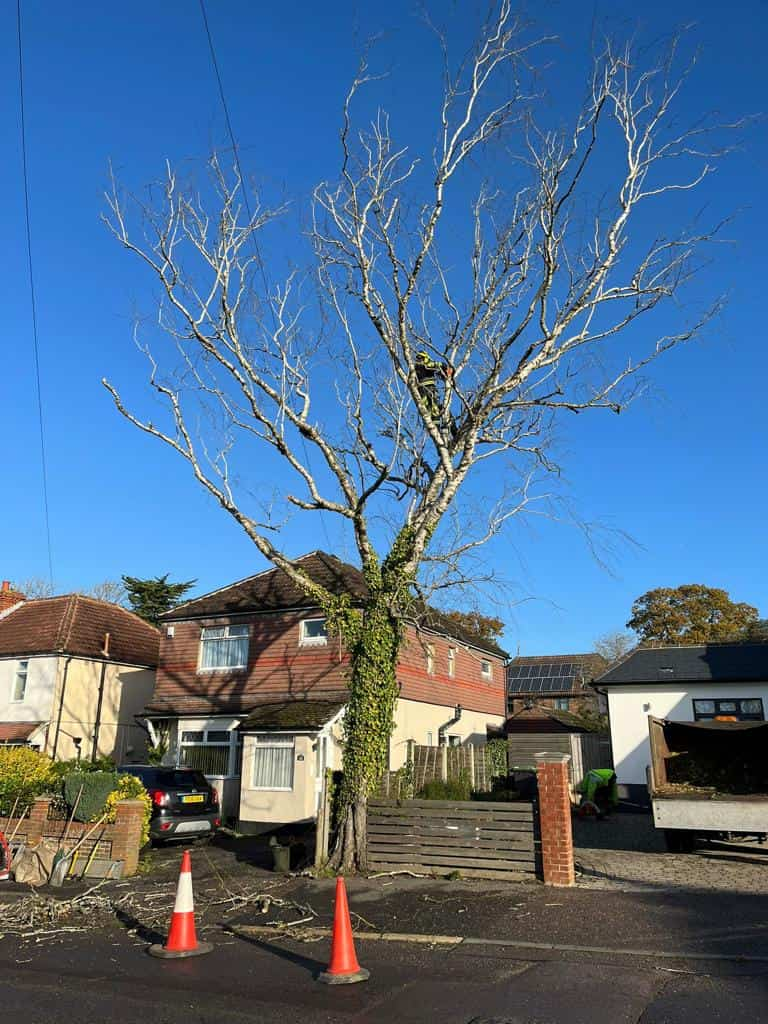Pruning may seem counterintuitive to tree growth, yet strategic trimming is one of the most effective ways to promote healthier, stronger trees. By carefully removing selected branches, tree surgeons can enhance structural integrity, encourage new growth, and improve overall tree vitality. This paradox—cutting to stimulate growth—demonstrates the importance of professional pruning for both aesthetics and long-term tree health.
Why Pruning Encourages Better Growth
Removing Weak or Diseased Branches
Dead, damaged, or diseased branches drain a tree’s resources and increase the risk of decay spreading. By cutting them away, the tree can redirect nutrients to healthy branches, promoting vigorous new growth and strengthening its overall structure.
Encouraging Stronger Structural Development
Without proper pruning, trees can develop weak limbs, poor weight distribution, and unbalanced crowns. Strategic cutting shapes the tree’s growth pattern, preventing future structural issues and reducing the risk of storm damage.
Increasing Sunlight and Air Circulation
Overgrown trees can develop dense foliage that blocks sunlight from reaching lower branches and the ground beneath. Pruning opens up the canopy, allowing light to penetrate and improving air circulation, reducing the likelihood of fungal infections and disease.
The Right Way to Prune for Healthy Growth
Formative Pruning for Young Trees
Early pruning helps shape young trees, ensuring they develop a strong framework. By removing competing leaders and crossing branches, tree surgeons can guide the tree’s structure to prevent future problems.
Crown Thinning for Mature Trees
Crown thinning selectively removes smaller branches to reduce weight without altering the tree’s overall shape. This improves light penetration and airflow, encouraging healthier growth while maintaining an attractive canopy.
Deadwood Removal and Maintenance Pruning
Regular pruning removes dead or dying branches, preventing decay and reducing the risk of breakage. This type of maintenance pruning keeps trees healthy and minimises potential hazards in residential or public spaces.
Avoiding Over-Pruning and Poor Practices
The Dangers of Over-Pruning
Excessive pruning can weaken a tree, leaving it vulnerable to disease, sun damage, and stress. A professional approach ensures that only necessary cuts are made, preserving the tree’s natural growth while improving its overall health.
Why DIY Pruning Can Cause Damage
Improper cutting techniques can result in ragged wounds that take longer to heal, making trees susceptible to pests and disease. Hiring a professional tree surgeon ensures that precise, clean cuts are made, reducing recovery time and promoting healthier regrowth.
When Is the Best Time to Prune?
Seasonal Considerations
- Winter pruning – Ideal for most deciduous trees, as they are dormant and can recover more efficiently before spring growth.
- Spring and summer pruning – Suitable for species that are prone to excessive sap loss in winter, but should be done carefully to avoid stressing the tree.
- Autumn pruning – Generally avoided, as cutting during this season can leave trees vulnerable to fungal infections before winter.
Conclusion
The pruning paradox highlights the importance of strategic tree cutting to encourage healthier, stronger growth. By removing dead or weak branches, improving structure, and enhancing light and air circulation, professional pruning ensures trees thrive for years to come. Proper pruning techniques not only maintain the tree’s beauty but also prevent potential risks to property and safety.
For expert tree pruning services in South Cerney, professional tree surgeons can assess your trees and carry out precision pruning to enhance their health and longevity. Contact us today for specialist care tailored to your landscape.
Call us on: 01285 708 216
Click here to find out more about EM Tree Surgery South Cerney
Click here to complete our contact form and see how we can help with your trees needs.

